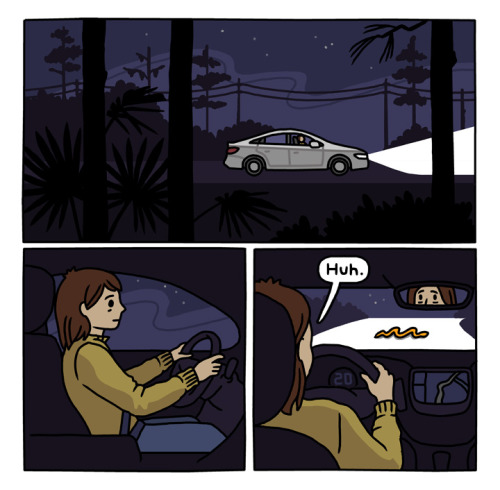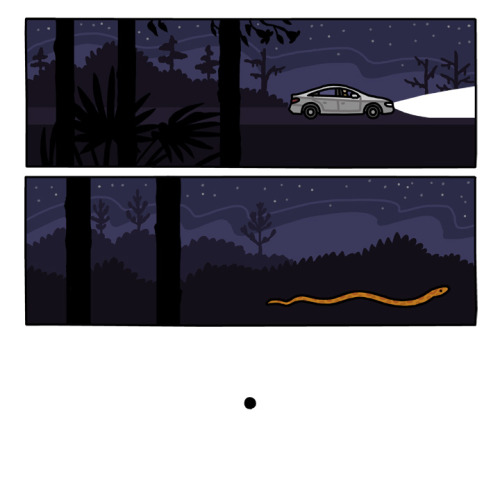In ‘Wild Design,’ Vintage Illustrations Expose The Patterns And Shapes Behind All Life On Earth



In ‘Wild Design,’ Vintage Illustrations Expose the Patterns and Shapes Behind All Life on Earth
More Posts from Secretagentpeptidebond and Others
Day in the life of a scientist
Me, at an art store: I need a paint marker with low toxicity and a delicate tip.
Employee: What kind of project are you working on?
Me: It's for a research project. I just need bright colors.
Employee: What medium are you using? Canvas or paper?
Me: uh....spiders.
Employee: Plastic or felt?
Me: ....live spiders. Like, from the forest.
Employee: ....
Employee: I have to get back to the counter.


SCIENTISTS SAY SPIDER-MAN CAN’T EXIST BECAUSE HUMANS ARE JUST TOO BIG
Sorry, Spidey. Any real-life Spider-Man would have to have size 114 shoes (sticky ones) or have 40% of his body covered in sticky pads in order to climb walls.
what do you think about chemical weapons and the use those weapons had against humanity? how do you feel about something as great as chemistry being used for such horrible things?
I’m sorry I just found this message buried in my inbox, so I don’t know when I received it.Short answer: Use chemistry for good. War bad. Chemical based war very bad. Be nice to other humans. Be nice to chemistry

it he @ultrainfinitepit







A snake story, based on an experience I had while I was in Florida.
i think i did something actually worthwhile in science this week.
i was asked to review a children’s science book for accuracy, and upon doing so i noted that every scientist mentioned by name was a man, and the vast majority were white. i pointed this out to the publishers in my review letter.
surprisingly, my comments seemed well received. i was thanked for noticing what everyone else had missed, and they told me they were going to change the list of scientists they discussed to be more representative. so, yay? i may have actually had a positive impact on science education?
what am i even doing still stuck at the bench, pipetting shit.
That one time my roommate couldn't watch Shane's Asagao Academy stream so I live-texted it to her instead.










@didyouknowshaning‘s asagao stream part 1/part 2




This beautifully diverse group of sea slugs can be found in oceans worldwide, but its greatest variety is located in the magical habitat of warm, shallow reefs. It’s name comes from the Latin for “naked” (nudus), but it’s often informally called a “sea slug.” Today, a profile of a group of marine gastropods called Nudibranchia.
Unlike other mollusks (think snails), most nudibranchs have lost their shells, evolving other mechanisms for protection. For example, some are able to ingest and retain poisons found in prey, later secreting them for defense.
All known nudibranchs are carnivorous, feeding on a variety of sea life including sponges, other sea slugs, and barnacles. One species, Glaucus atlanticus, is known to prey on the Portuguese man o’ war!
Hermaphroditic, nudibranchs have a set of reproductive organs for both sexes, which means any creature can mate with another. That said, a nudibranch can’t fertilize itself.
According to National Geographic, “some nudibranchs are solar-powered, storing algae in their outer tissues and living off the sugars produced by the algae’s photosynthesis.”
The creature has very simple eyes (able to distinguish little more beyond light and dark), but have cephalic (head) tentacles that are sensitive to touch, taste, and smell. Its gills are uncovered, located behind their heart, and protrude in plumes on their back, making for a large surface area that grants more efficient oxygen exchange.
(Image Credits: Creative Commons, clockwise, richard ling, Raymond, Peter Liu Photography / Source: National Geographic, Wikimedia Commons, Earth Touch, Murky Secrets: The Marine Creatures of the Lembeh Strait)
-
 the-awesomeness-of-randomness liked this · 1 month ago
the-awesomeness-of-randomness liked this · 1 month ago -
 froogboi liked this · 1 year ago
froogboi liked this · 1 year ago -
 lanternhiraeth reblogged this · 1 year ago
lanternhiraeth reblogged this · 1 year ago -
 lanternhiraeth liked this · 1 year ago
lanternhiraeth liked this · 1 year ago -
 primordialfather liked this · 2 years ago
primordialfather liked this · 2 years ago -
 weblackbell liked this · 2 years ago
weblackbell liked this · 2 years ago -
 d--r--i--f--t--w--o--o--d reblogged this · 2 years ago
d--r--i--f--t--w--o--o--d reblogged this · 2 years ago -
 justforficsjules liked this · 2 years ago
justforficsjules liked this · 2 years ago -
 priestess-virtuose liked this · 2 years ago
priestess-virtuose liked this · 2 years ago -
 hhodge liked this · 2 years ago
hhodge liked this · 2 years ago -
 l-will-see-your-face liked this · 2 years ago
l-will-see-your-face liked this · 2 years ago -
 gooskeleton liked this · 2 years ago
gooskeleton liked this · 2 years ago -
 hauntoad reblogged this · 2 years ago
hauntoad reblogged this · 2 years ago -
 deadboiiiiiii69 liked this · 2 years ago
deadboiiiiiii69 liked this · 2 years ago -
 aldesio reblogged this · 2 years ago
aldesio reblogged this · 2 years ago -
 aldesio liked this · 2 years ago
aldesio liked this · 2 years ago -
 leafyfern reblogged this · 2 years ago
leafyfern reblogged this · 2 years ago -
 leafyfern liked this · 2 years ago
leafyfern liked this · 2 years ago -
 travel-wander-learn99-blog liked this · 2 years ago
travel-wander-learn99-blog liked this · 2 years ago -
 edgard-ab liked this · 2 years ago
edgard-ab liked this · 2 years ago -
 luzazuladah liked this · 2 years ago
luzazuladah liked this · 2 years ago -
 fabioafterdark liked this · 2 years ago
fabioafterdark liked this · 2 years ago -
 thearspoetica reblogged this · 2 years ago
thearspoetica reblogged this · 2 years ago -
 thearspoetica liked this · 2 years ago
thearspoetica liked this · 2 years ago -
 currentnow reblogged this · 2 years ago
currentnow reblogged this · 2 years ago -
 not-your-npc liked this · 3 years ago
not-your-npc liked this · 3 years ago -
 aesthras reblogged this · 3 years ago
aesthras reblogged this · 3 years ago -
 big-flrda-kys liked this · 3 years ago
big-flrda-kys liked this · 3 years ago -
 dotrans-becrimes liked this · 3 years ago
dotrans-becrimes liked this · 3 years ago -
 autosystem liked this · 3 years ago
autosystem liked this · 3 years ago -
 generallyconfusedlikeallthetime liked this · 3 years ago
generallyconfusedlikeallthetime liked this · 3 years ago -
 satur9spider liked this · 3 years ago
satur9spider liked this · 3 years ago -
 evgheny--lord liked this · 3 years ago
evgheny--lord liked this · 3 years ago -
 cocktailpolitics reblogged this · 3 years ago
cocktailpolitics reblogged this · 3 years ago -
 highlandtimes reblogged this · 3 years ago
highlandtimes reblogged this · 3 years ago -
 robert50fun liked this · 3 years ago
robert50fun liked this · 3 years ago -
 llamalaluna reblogged this · 3 years ago
llamalaluna reblogged this · 3 years ago -
 the-mister-law reblogged this · 3 years ago
the-mister-law reblogged this · 3 years ago


